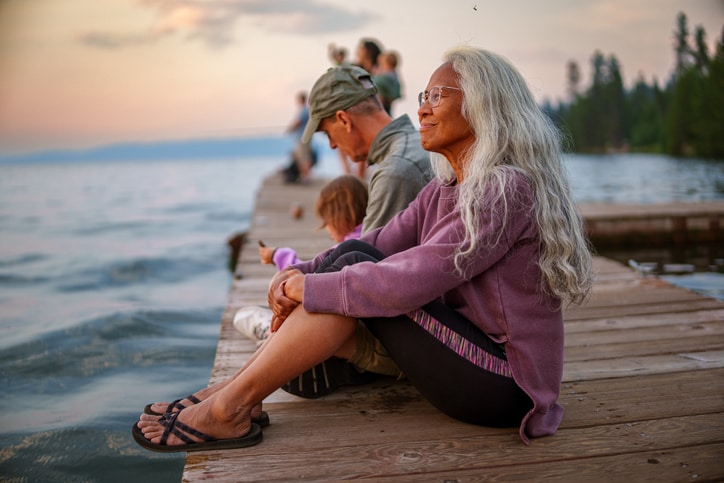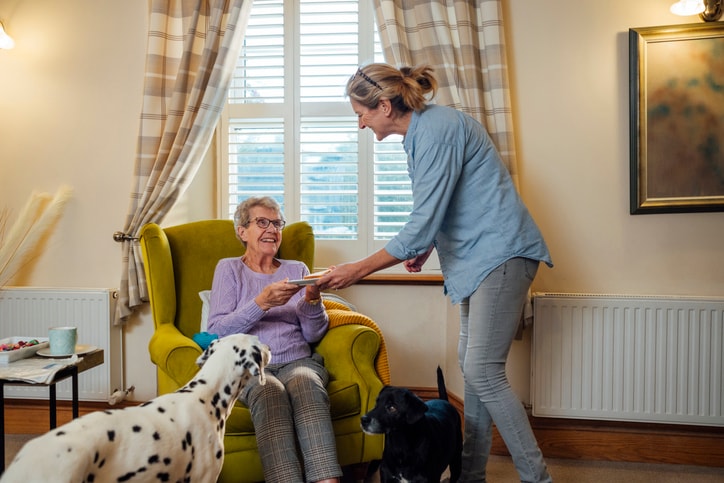As you age, staying mentally sharp and having the mobility to move as painlessly as possible from one task to the next increases your overall health and happiness. This is the concept of active aging — developed by physicist Robert J. Havighurst in 1961 and adopted by the World Health Organization. It focuses on living an active lifestyle, promoting independence and improving your quality of life as you grow older. It’s about more than just staying physically active though — it’s also about nurturing your social connections and keeping your mind sharp so you can continue to thrive in your later years.
Bronce J. Rice, a psychoanalyst and psychologist in New Haven, Connecticut, explains, “When I think of someone actively aging, I look for signs of vitality in their daily life, their ability to recover from setbacks and how engaged they are with themselves and others.” Rice emphasizes that active agers focus on a balance of physical, emotional and social health, all contributing to lasting well-being.
Here experts explore what active aging looks like, how it can benefit you and ways to incorporate active aging into your life.
What is active aging?
Actively aging — from a physical perspective — is about embracing how great you can feel as you get older,” says Anuja Ghate, a physical therapist in Manhattan, “rather than just letting those inevitable changes in your body limit your lifestyle or impact your wellness.” She adds she’s noticed how fulfilled her older adult clients feel when they’re able to maintain their independence and wellness through consistent movement and exercise.
Milica McDowell, an exercise physiologist at Gait Happens in Bozeman, Montana says, “A person that is actively aging is engaged in two specific types of behavior: preventative behaviors and maintenance behaviors.” She adds this involves actively maintaining current status, whether that’s their fitness, friendships or recreational pursuits while also pursuing prevention efforts, such as regularly seeing their medical team, improving their mental health and eating right.
Benefits of active aging
Experts agree that embracing active aging offers a wealth of advantages, including enhanced health, independence and overall quality of life as you age. Here the experts share some of those benefits.
Physical benefits
- Improved mobility and balance: Regular physical activity enhances muscle strength and joint health, which leads to improved mobility and balance. “As we age, it’s critical to maintain our strength and balance, as they directly reduce the risk of falls and injuries,” explains Rice.
- Managing chronic conditions: Active aging helps manage or even prevent conditions like diabetes, hypertension and osteoporosis. Rice notes, “Physical activity is key in maintaining health and managing chronic conditions, contributing to a longer, healthier life.”
- Boosting cardiovascular and immune health: Staying active helps support heart health and strengthens the immune system. Rice says, “A healthy cardiovascular system and strong immunity are essential for aging well and remaining independent.”
Mental benefits
- Enhanced memory and cognitive abilities: Active aging boosts cognitive resilience, helping reduce the risk of cognitive decline. As Rice notes, “Staying engaged mentally through activities can significantly slow down cognitive deterioration and maintain memory function.”
- Improved emotional well-being: Staying active can boost self-esteem and reduce symptoms of anxiety and depression by promoting a sense of purpose and accomplishment. According to McDowell, “Active aging fosters a positive sense of self, enhancing emotional well-being by giving individuals a reason to stay engaged with life.”
- Stress reduction: Active aging also helps with managing stress and promotes a calmer, more centered state of mind. “By focusing on activities that bring joy, people find they are more resilient when facing challenges,” says McDowell.
- Promoting self-compassion: Engaging in regular activity can encourage individuals to be kinder to themselves. “In times of struggle, being active helps you approach difficulties with a sense of calmness and compassion,” says Rice.
- Reduced loneliness and mental distress: Engaging in regular physical activity reduces loneliness and its associated risks, such as anxiety, depression and sleep disturbances. McDowell points out, “When individuals participate in activities that engage them socially and physically, it has a direct impact on their mental health, decreasing feelings of isolation.”
- A sense of purpose: Active aging also encourages sharing life experiences and wisdom with younger generations, which provides a sense of fulfillment and purpose. McDowell adds, “Giving back by mentoring or sharing knowledge creates a lasting sense of purpose, which is vital to mental health in later years.”
Social benefits
- Strengthened relationships and reduced isolation: Community involvement and group activities provide opportunities to connect with others, reducing feelings of loneliness and depression. “Building strong social ties through community engagement makes a huge difference in mental and emotional health,” says Rice.
- Fostering meaningful connections: Participating in hobbies or volunteer work strengthens relationships and enhances life satisfaction. “Sharing common interests with others promotes joy and reduces the risks associated with isolation,” Rice adds.
- Sustaining independence: Social connections support the desire to remain independent as we age. “Being involved in social and community activities helps older adults stay connected to aspects of life that bring them meaning and fulfillment,” explains Rice.
Ways to incorporate active aging into daily life
Here experts offer practical tips to help incorporate active aging into your daily lives and maintain physical, mental and relational health.
Physical health
- Start small: Begin with small changes, such as a 10-minute walk or adding more vegetables to meals.
- Stay active: Rice says to aim for 30 minutes of moderate exercise daily.
- Eat well: Focus on a balanced diet rich in fruits, vegetables, lean proteins and whole grains.
- Prioritize sleep: Maintain a consistent sleep schedule and create a restful environment (such as avoiding technology before bed and dimming the lights).
- Combine activities: Pair socializing with exercise, like walking with a friend.
- Routine checkups: Visit healthcare providers regularly for preventive care.
Mental well-being
- Stimulate the mind: Take up new hobbies, read or attend workshops. “Staying mentally engaged through hobbies, puzzles or learning fosters a sense of achievement,” says Rice.
- Track, relax and reflect: Use a journal or app to monitor health, fitness or personal goals and dedicate time to meditation, gratitude or relaxation techniques.
- Be consistent: Integrating healthy habits into daily life helps build energy and a positive growth mindset.
- Seek support: When stressed, consider visiting a therapist to discuss stress management and grounding techniques that enhance your quality of life.
Social engagement
- Stay connected: Schedule regular calls or visits with family and friends.
- Join groups: Participate in community clubs, classes or volunteer opportunities. Consider starting a book club, walking group or attending exercise classes.
- Embrace technology: Use video calls and social media to stay connected and explore virtual activities.
- Consider getting a pet: A pet like a dog or cat can provide companionship and help with daily activities, like walking, which can also lead to meeting new people.
Facing obstacles to active aging
Experts note that acting on the concepts of active aging can be challenging for some. “The biggest obstacle I see is fear,” says Ghate. She notes that older adults often lack the confidence to try new activities and that a common concern is falling.
Additionally, Rice says older adults often face physical challenges like arthritis, chronic illness or reduced mobility that can make staying active difficult. To overcome these obstacles, he suggests modifying some activities, such as opting for low-impact exercises like swimming, chair yoga or walking. He adds assistive devices, including canes or walkers, can also improve mobility, and working with physical therapists or trainers specializing in senior fitness provides additional support. AARP memberships also offer online classes.
Rice says beyond physical barriers, mental health challenges, such as depression, anxiety and loneliness, can also decrease motivation to stay active. He says, “Encouraging seniors to join support groups, attend therapy or practice mindfulness techniques can help reduce feelings of isolation.” Addressing these issues is key to promoting overall well-being.
A final word on active aging
Active aging goes beyond physical fitness. It’s about nurturing both mind and body for a fulfilling life. It involves staying physically active, mentally sharp and socially connected, fostering resilience in the face of challenges. By embracing these habits, you can maintain independence and vitality, reducing the risks of isolation and decline.
“You can’t stop the effects of aging,” but you can hold them off, Ghate says. She emphasizes that it’s never too late to start and that immense pride can come from maintaining your independence into your 60s, 70s and 80s. “Take that first step and plan a new hobby, activity or exercise today.”





